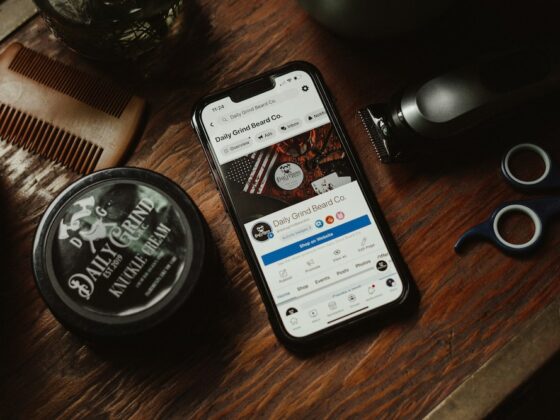If you’re starting a business, you’re going to need a sound plan that outlines each aspect of your enterprise.
First, you must consider who is going to create your plan. You have two basic options—you can hire an expert to write it or you can develop your own.
If you decide to write the plan yourself, you’ll find numerous websites that provide free outlines and guidance. Taking on the job yourself can be intimidating, especially if you’ve never written a plan before. This document is, after all, the most important paper you’ll possess when it comes to raising money for your new business, understanding all of the intricacies involved in creating and running your company and planning for its future growth.
Ask friends who already run successful businesses if you can see their plans or if they will take a look at yours. Also check with your local Chamber of Commerce for any information they may have relating to planning a new business. When hiring a company be sure to do your research. Ask for references, examples of prior work and check out the owners’ credentials. Again, query friends and relatives to see if they have worked with a business planner who they can recommend.
Consider what a business plan is designed to do. It has numerous applications, with some of the most important being:
- It’s a personal document that clearly outlines the progression of the creation and implementation of your business.
- It defines your goals for yourself, your employees and your suppliers.
- It illustrates how you will achieve your goals.
- It serves as an anchor, which is especially useful when times get chaotic and unanticipated problems arise.
- It is a problem-solving document that you can continue to develop as concerns, challenges and changes evolve.
- It defines your market, product and clientele.
- It’s your initial financial document that will show loan providers and investors that you are on solid economic footing, making you less of a money risk.
In order to achieve the above, your business plan should provide the following information:
- Define and describe your business and your store’s image.
- Determine what you want and need in a storefront.
- Describe the day-to-day operation and any weekly or monthly benchmarks or tasks.
- Clearly define your marketplace and delineate marketing strategy.
- Determine sales potential, including a typical customer profile.
- Discuss how you will attract customers.
- Indicate pricing and customer service policies.
- Illustrate how you will advertise your business.
- Determine how you will work with wholesalers/suppliers.
- Spell out how much inventory you anticipate stocking and how quickly it will turn over.
- Plan on how invoicing, accounting, ordering, display creation and other behind the scenes jobs will be done.
Define your budget including:
- Start-up Costs.
- Monthly Expenses.
- Anticipated sales.
- Accounting measures.
- Stock control.
- Receipts.
- Sales.
- Disbursements.
- Break-Even point also known as your ‘nut’.
Once you’ve created your plan and determined that it is sound, you’re ready to begin implementing it. It will take time to perform the necessary research, write the document and successfully present your plan. You must also be prepared to rewrite your plan due to new information, developing trends and changes in the marketplace.
Remember that a business plan is as specific and grounded as it can be in a business world that is constantly changing. In Part II of this article, we’ll provide more detail concerning what should be covered in your plan.
Options for Development and How to Utilize Your Plan
In Part I we addressed the writing of your retail business plan, including describing and delineating specific areas relating to the creation and implementation of your storefront business. In this article, we’ll consider a basic outline for your document.
The most important aspect of any business plan is that it’s clearly written and organized. Although you will be asked questions regarding your venture, they should not be queries based on anything that is unclear or confusing in the document. As an example, if you believe you’ve defined your potential clientele and a few people review the plan and a majority of them ask you who you’ve determined will be your customer base, then you probably want to rewrite that section of your plan.
Questions related to your business plan should be based on interest in the project and not confusion over the document. Before presenting your plan to a potential financial source, you should have three people, whose judgment you trust and who will provide you with feedback, read it.
This plan is a sales document that you will need to know inside out and be prepared to present, expand upon and defend. Here are some of the essential categories that you’ll want to include in your plan.
Introduction:
- Describe your business by defining the concept of your venture and the purpose of your company.
- Does your establishment/business have a catchphrase?
- Describe the image of your business.
- Delineate the type of business you’ll be creating—partnership, sole trader, limited partnership, co-operative, etc.
- Present the objectives of your retail establishment.
Product:
- Define exactly what you will be selling and why.
- Compare your product to competitor’s goods and explain what sets it apart from similar wares.
- Additionally, address where it fits in the marketplace—high-end and expensive, moderately priced, or inexpensive? Will there be a range of products in terms of pricing?
The Market:
- Describe your potential customer base.
- Is there potential for continued growth in this segment of the population?
- Why would they want to buy your goods?
- Discuss potential competition and how you will contend with it.
- In what way will the city, community and location be conducive to the success of your business?
Marketing Plan:
- Consider your product and what aspects make it attractive to customers.
- How will you draw customers to your establishment?
- Will you offer special promotions?
- How will you focus your marketing to get the most value from the money spend?
- What types of media will you utilize?
Personnel:
- How many people will you need to hire in order to successfully run your business?
- Define each if their jobs in relationship to the running of the business.
- How many hours will your employees work? Will you be using full-time, part-time or both types of employees?
- Do your employees need to be experts in the product and will they need prior sales experience?
Operation:
- This is where you specifically describe how your business will function.
- Include storefront and behind the scenes operations.
- A daily, weekly and monthly schedule describing important operational elements is helpful.
- Schedules might include maintenance, restocking of inventory, billing cycles, display development and changeover, etc.
Customer Relations:
- What is your philosophy regarding your customers?
- How will you handle exchanges, customer complaints and returns?
- Will you offer some sort of discount or customer rewards program?
Premises:
- Where is your store located and how will people get to it?
- Is parking available, is the storefront visible and can it be easily found?
- Does it need to be renovated or upgraded?
- Stylistically, what will the outside and inside look like?
- Will it be a pleasant place to shop? In what way?
- Is there room for expansion?
- Is storage available for inventory?
Financial Outline:
- Key financial facts should be presented before going into detail.
- Forecast of Profit and Loss.
- Cash Flow Forecast for you business.
- Describe the Break-Even point for your company.
Summary of Content:
- Use this section to bring the focus back on your specific business.
- Reiterate the value of your product.
- Define once again, in a few words, the image of your company.
- Create a final, positive picture of your venture and its relationship to the community, your customers and the other businesses.
Appendix:
- Include CVs.
- Details relating to the premises.
- Marketing examples, such as ads, brochures and photographs.
- Flow charts, diagrams, examples of the product.
- Anything else that will provide substance to your presentation.
This thumbnail sketch of a retail business plan can serve as a basic template for your use. However, be mindful that this article in no way presents a complete picture of a successful plan. As an example, in order to develop a useful plan, you’ll need to know how to determine Profit-Loss, Break-Even Point and Cash Flow. We have not addressed those specific exercises in this piece. Additionally, plans vary according to the specific needs and requirements of each business.
As you prepare this document be sure to do your research and compile your facts carefully. Your business plan is the written foundation for what you hope will lead to your success in the highly competitive world of retail.










